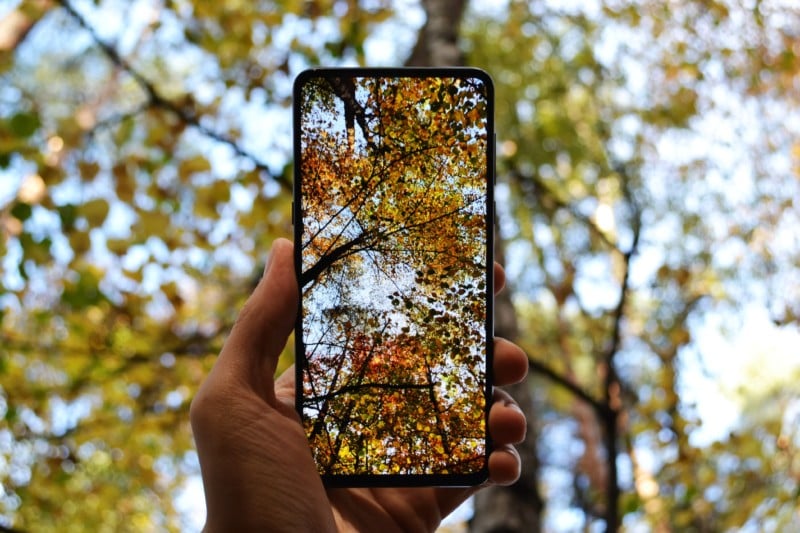In the world we see many technologies getting better day by day. One of these is Smartphone Camera Quality. We have come so far that we can now compare portable Smartphone Camera with heavy professional DSLRs. We see Smartphone Camera upgrading from 0.3MP to 64MP to 108MP. OEMs are collaborating with smartphone camera manufacturers like Sony and Samsung to include the best quality sensor in their smartphones. Apart from Sony and Samsung, OmniVision too makes Smartphone Camera sensors. Recently, OmniVision unveiled its first 64MP image sensor, the OV64B. This OV64B is a 1/2” sensor larger than other 64MP sensors in the market. Continue reading the article to know more about OmniVision OV64B 64MP sensor, OmniVision OV64B 64MP features and OmniVision OV64B 64MP specifications.
OmniVision OV64B 64MP Features
The recently announced Omnivision OV64B sensor claims it to be the world’s first 0.7-micron 64MP image sensor. This could prove to be beneficial for ultra-thin flagship smartphones. The new OV64B is a ½ inch sensor that has been built on OmniVision’s PureCel Plus-S stacked die technology. In addition to 64MP stills, the sensor can also output 16MP images.
It uses a 4-cell colour filter array, which is commonly known as Quad Bayer to capture pixel-binned 16MP low-light images. In terms of video, the OV64B is capable of recording 8K video at up to 30 fps, 4K video at up to 60fps, and 4K video with Electronic Image Stabilization (EIS) at up to 30fps. Also, it can achieve slow-mo capture at up to 240fps at 1080p and 480fps at 720p as well.

OmniVision OV64B 64MP Specfications
If you are very geek to know the technical specifications of this new sensor, this table is for you.
| Specifications |
OmniVision OV64B |
| Package |
COB RW |
| Technology |
PureCel Plus-S
HDR |
| Interface |
SCCB
MIPI |
| Shutter Type |
Rolling Shutter |
| Resolution |
64MP |
| CFA (Chroma) |
4-Cell
Colour |
| Analog / Digital |
Digital |
| Power Requirement |
Standby: <10 µA |
| Output Format |
RAW |
| Operating Temperature |
-30°C to +85°C |
| Optical Format |
1/2″ |
| Frame Rate |
Full @ 15 fps |
| Pixel Size |
0.702 µm |
| Image Area |
6514.56 x 4897.152 μm |
| Programmable controls for |
Frame rate
Mirror and flip
Binning
Cropping
Windowing |
| Supports output formats |
10-bit RGB 4C non-HDR
10-bit RGB Bayer non-HDR |
| Supports typical images sizes |
9248 x 6944
7680 x 4320
4624 x 4320
3840 x 2160
1920 x 1080
1280 x 720 |
| 4-cell support |
4-cell binning
4-cell full |
| HDR support |
Stagger HDR 2/3 exposure timing |
| Other Features |
– On-chip 4-cell to Bayer converter
– Three on-chip phase lock loops (PLLs)
– Programmable I/O drive capability
– Built-in temperature sensor
– Standard serial SCCB interface
– Up to 4-lane MIPI TX interface with speed up to 3.0 Gbps/lane
– 2/3 trio CPHY interface, up to 2.45 Gsps/trio
– Supports type-2 2×2 ML PDAF |
OmniVision OV64B 64MP vs Other 64MP Camera Sensor
OV64B vs Samsung ISOCELL Bright GW1
OmniVision has announced OV64B 1/2″ camera sensor which the company claims is the world’s first 0.7-micron 64-megapixel image sensor which can be used in high-end ultra-thin smartphones. In comparison, Samsung ISOCELL Bright GW1 64MP camera sensor is larger as it uses 0.8-micrometer pixels on a 1/1.7” sensor. On the other hand, the Samsung ISOCELL Bright 48MP sensor uses 0.8-micrometer pixels on a 1/2-inch sensor.
OmniVision OV64B vs Sony IMX686
Comparing the new sensor with Sony, the Sony IMX686 is a 64MP image sensor with a large sensor size of 1/1.7” and a pixel size of 0.8μm. The Sony IMX586 48MP camera sensor offers a pixel size of 0.8 μm onto a 1/2-type unit.

Omnivision OV64B has specifications align with what Qualcomm’s Snapdragon 865 chipset supports. So, we can expect some thinner phones with Omnivision’s latest sensor with Snapdragon 865 processor in the near future.
That’s All For Today. Stay Tuned To TECHBURNER For More Stuff.
[Source]